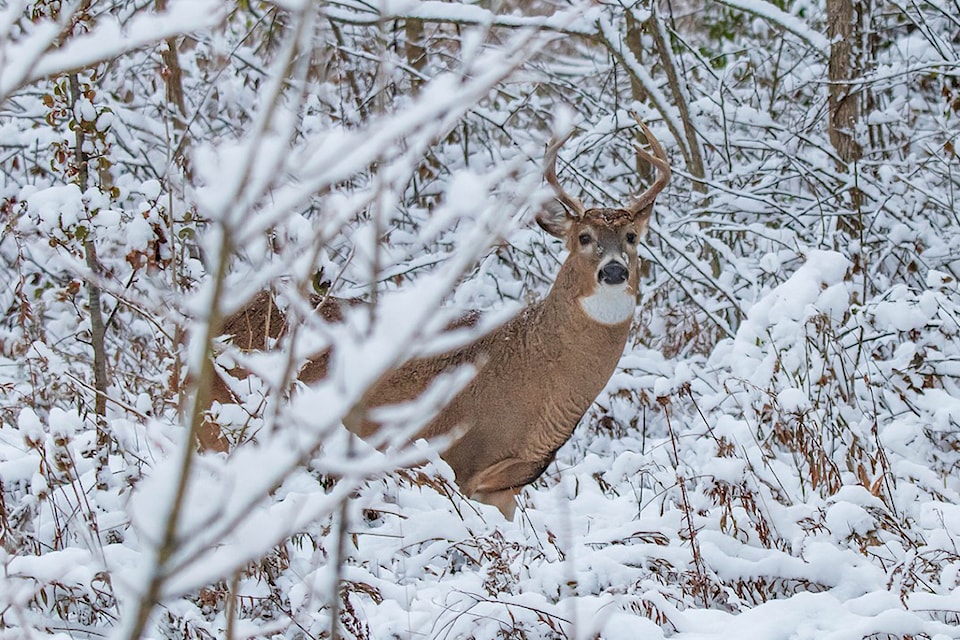A third case of Chronic Wasting Disease (CWD) has been confirmed in a white-tailed deer that was harvested last month south of Cranbrook, after a sample tested positive on Nov. 20, according to an info bulletin from the provincial government.
The white-tailed deer was harvested only a few kilometres away from where one of the first two test-positive cases were confirmed in the region by the province early this year.
The first two cases detected in the province were confirmed by lab testing in February 2024; one was from a roadkill female whitetail deer south of Cranbrook, while the other case was a mule deer harvest from the South Country area east of Lake Koocanusa.
Jesse Zeman, executive director for the B.C. Wildlife Federation, is calling on the provincial government to step up its efforts to respond to the wildlife disease, particularly through management of urban deer populations within communities such as Cranbrook and Kimberley.
“CWD is becoming more prevalent since two cases were detected earlier this year,” said Zeman. “Cranbrook and other towns in the East Kootenay are perfect vectors for CWD as they have high densities of urban deer.”
“Urban deer populations in towns like Kimberley, Cranbrook and Creston need to be dramatically reduced immediately and the province needs a dedicated funding mechanism to ensure that we can adequately address this problem."
All CWD cases to date have been found within a chronic wasting disease management zone that includes 14 wildlife management units in the Kootenay region. Measures are in place within this zone to continue to collect data to help mitigate the risk of disease spread.
"Hunters have been actively engaged in sampling and turning in heads to do their part to identify prevalence and continue to be diligent about following new transportation of cervids, such as deer, elk and moose,” Zeman noted. “Along with greater cooperation from hunters, testing turnaround times have improved.”
In addition to mandatory submission of samples for testing within the management zone, the province has implemented carcass travel restrictions that prevent anyone from transporting a carcass outside of the management zone boundaries.
Earlier this year, the province also issued a pair of wildlife permits for special harvests in the areas where the first two deer that tested positive were discovered in order to collect more samples for additional testing surveillance.
CWD affects cervids, such as deer, moose, elk, and caribou, and is a condition of the central nervous system caused by infectious agents called prions, which kill cells in the brain as they accumulate and lead to neurological disease.
Prions, a type of protein, also accumulate in other tissues and may be shed by the infected animal into water or on plants and bedding through saliva, urine and feces.
It is 100 per cent fatal to wildlife with no known treatment.
However it is not known to affect humans or livestock, although public health guidance recommends that animals with CWD should not be consumed.
Animals that otherwise look completely healthy can be infected with CWD, while more visible symptoms may include weight loss, drooling, poor co-ordination, stumbling, or generally sick with no obvious reason.



